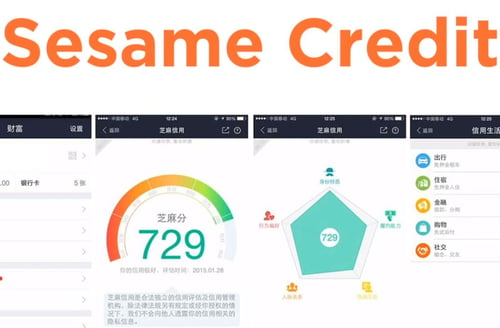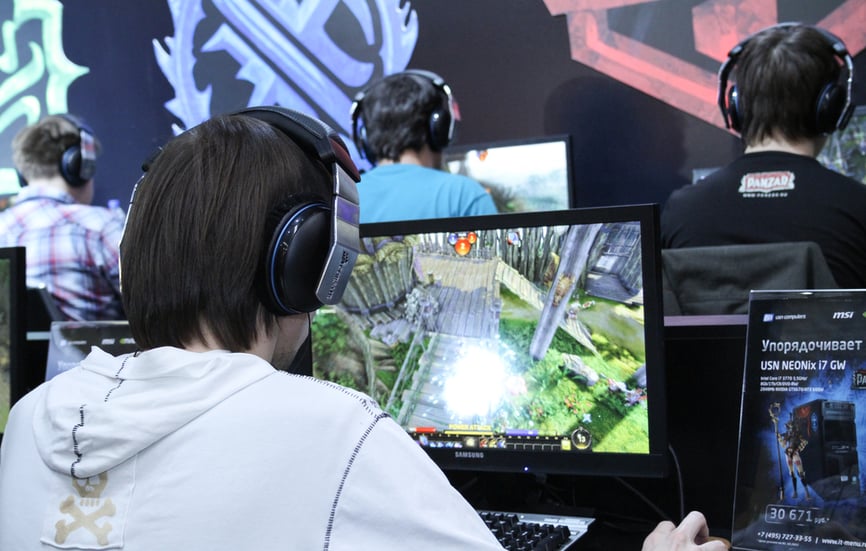Blog
Pokémon Go: 3 Lessons for Instructional Designers
By Edmond Manning, Senior Instructional Strategist I want you to read every line of this blog post, so here’s what I’m going to do. I will give you ...


Gameful Design
By Edmond Manning | June 30, 2016 | Custom Learning | 0 Comments
By Edmond Manning, Senior Instructional Strategist
 I want you to read every line of this blog post, so here’s what I’m going to do. I will give you 50 points, and you can use those points to buy an avatar and accessories. No, wait—Better than points, I’m going to give you a badge. It’s cute with a happy squirrel on it, and also our company logo, and the squirrel is seen enjoying one of our fine products. Our company’s Web address is even on the badge.
I want you to read every line of this blog post, so here’s what I’m going to do. I will give you 50 points, and you can use those points to buy an avatar and accessories. No, wait—Better than points, I’m going to give you a badge. It’s cute with a happy squirrel on it, and also our company logo, and the squirrel is seen enjoying one of our fine products. Our company’s Web address is even on the badge.
No? That won’t guarantee you’ll finish this article?
Well, crap.
WAIT, DON’T GO.
How about this—I will time you. You now have three (3) minutes to finish reading this blog post, starting…now.
Still not committed to reading this post?
Crap.
What if I reveal a big, juicy secret—aw, forget it.
Well, I tried gamifying this blog post and it didn’t work.
Therefore, gamification doesn’t work.
Unfortunately, this is how many instructional designers approach ‘gamification’—randomly throwing operant conditioning elements at learners to buy their loyalty, their time, and their commitment. Want to gamify your training? Add a timer. Award badges. Give their avatars sunglasses or something.
A Better Approach to Integrating Games
The word itself—gamification—always bugged me. For a long time, I couldn’t identify why. Only after hearing the phrase “gameful design” did I finally understand.
Gamification is a bag of tricks, not unlike the things a used car salesman might use to use to hook an unsuspecting victim. “Better decide now. I’ve got another buyer interested in this beauty.” Or perhaps, “A sweet elderly couple only drove it to church once a week.”
These are tricks. They are ploys. Sometimes they even work. But they are not instructional design.
The term gameful design comes from Jane McGonigal’s company Superbetter. McGonigal designed a healing game, SuperBetter, based on her experiences recovering from head trauma. The company’s blog includes their definition of gameful design:
SuperBetter offers an alternative to gamification. Instead of taking the psychological hooks and operant conditioning from games, we use their deeply satisfying properties—things like agency, emotion, and immediate feedback—to help people do what they really want to do: feel better, reach their goals, connect with others, and live with meaning. We call this a gameful approach to design.
Wow.
Isn’t that great?
Although this is not written for the field of instructional design (and to that end, I take issue with the notion that immediate feedback is always necessary), still, the first time I read this definition, I sighed with deep relief. I didn’t know I needed this definition until I read it.
Instructional Design: It’s More than Tricks
One of my most frustrating professional experiences is watching people who claim to be instructional designers integrating some weird combination of personal opinion/random design principles/something they read online last week and calling this conglomeration “instructional design.” These practitioners are often quite proud of how quickly they leap to a design conclusion.
They often fail to consider:
-
The performance gap
-
Analysis around the performance gap
-
Closing the gap
-
Instructional objectives
-
The full range of ID solutions (including non-training solutions)
-
People
The last bullet is most troubling to me—inexperienced designers discuss learners as if they are cattle to herd toward a certain end, to expose them to content, and then rush them through a post-quiz they will certainly pass because A) testing was poorly designed and B) content was spoon-fed to learners. They use training not as an opportunity to engage with learners, but instead to control them.
Am I overstating the matter?
Can gamification be used as a dehumanizing metric to control people?
Hmmmm. Check out China.
Sesame Credit
In 2015, the country introduced a game to their general populace called Sesame Credit. Ostensibly, the goal is to create a national credit score that can help assess individuals when they apply for travel papers or a loan (or find a mate—a matchmaking company was heavily involved in developing this approach). In theory, that sounds reasonable.
It’s not.
They gamified it.
 Sesame Credit tracks consumer purchases. Buy state-approved items (work shoes and local produce) and an individual’s points rise. Download unapproved music, or say, Japanese anime, and citizens lose points. There are tiers and levels. Having a higher score gives you advantages. Post a negative impression of a government policy on social media and your score goes down. Publicly praise a government policy and earn points. Know what significantly brings down an individual’s score? Having friends who have low scores. Disassociate with low scorers and your score rises.
Sesame Credit tracks consumer purchases. Buy state-approved items (work shoes and local produce) and an individual’s points rise. Download unapproved music, or say, Japanese anime, and citizens lose points. There are tiers and levels. Having a higher score gives you advantages. Post a negative impression of a government policy on social media and your score goes down. Publicly praise a government policy and earn points. Know what significantly brings down an individual’s score? Having friends who have low scores. Disassociate with low scorers and your score rises.
Doesn’t this seem a little Big Brother-esque?
Luckily, opting in to Sesame Credit is voluntary.
Well, until 2020, when it becomes mandatory for all citizens of China.
This propaganda game is analyzed on YouTube™ by Extra Credit, a gaming group. The video is 7:28 minutes long and is absolutely fascinating.
Change Your Approach
Perhaps your organization isn’t interested in dominating its employees and customers through gamification to the point of blind obedience.
Good. Great, even.
But when you design and consider gaming elements, do you consider gameful design? Do you wonder about the learner, the impact of the training experience, and consider how to improve your learners’ lives?
Maybe it’s time, as an industry, that we did.
At the beginning of the blog post, I promised a BIG SECRET revealed at the end. Here it is. Throwing gamification at a training problem won’t solve the problem any more than throwing microlearning, learning styles, video, or portals with links. The way to solve a problem remains the same, no matter which approaches are in vogue: design a solution.
It all comes back to solid instructional design.
LIKE WHAT YOU'VE READ? SHARE THE KNOWLEDGE WITH YOUR PEERS USING THIS READY-MADE TWEET!
 CLICK TO TWEET: Checkout this blog on Gameful #Design. http://hubs.ly/H03twwk0 #gamification #InstructionalDesign
CLICK TO TWEET: Checkout this blog on Gameful #Design. http://hubs.ly/H03twwk0 #gamification #InstructionalDesign

About the Author: Edmond Manning
Edmond Manning, senior instructional designer for Allen Interactions, has more than 20 years designing interactive e-learning experiences on instructional topics including: software simulation, medical ethics, supervisory skills, and selling/presentation skills, and gosh, a whole bunch of others. He has helped mentor and grow e-learning departments, worked as a business consultant, independent contractor, and instructed the ATD e-Learning Instructional Design Certificate Program for more than a decade. Edmond has a master's degree from Northern Illinois University in instructional technology.
Comments
Would you like to leave a comment?
Related Blog Posts

By: Edmond Manning | Jul, 2016
Category: Custom Learning

Blog
Turn Left at That Former Gas Station
By Edmond Manning, Senior Instructional Strategist I want you to read every line of this blog post, so here’s what I’m going to do. I will give you ...
By: Edmond Manning | Oct, 2015
Category: Custom Learning

Blog
Hold the Phone (training)—5 Questions to Ask First
By Edmond Manning, Senior Instructional Strategist I want you to read every line of this blog post, so here’s what I’m going to do. I will give you ...
By: Edmond Manning | Dec, 2015
Category: Custom Learning


